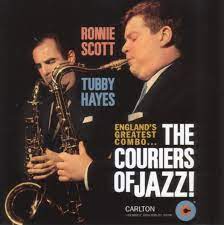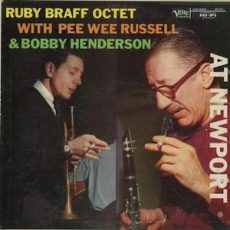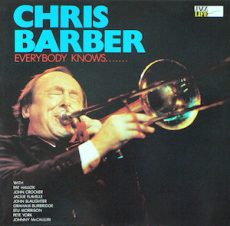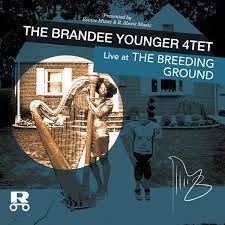
Daily Dose Of Jazz…
Pekka Juhani Pöyry was born on December 10, 1939 in Helsinki, Finland and became interested in jazz music at school and began studying the violin and clarinet. However, he was more taken with playing the alto saxophone, having been inspired by Charlie Parker. In addition, he played the flute and soprano saxophone.
After graduating with a Master of Laws in 1966, Pöyry decided to become a professional musician. In the same year he represented YLE, Finland’s national public broadcasting company at EBU’s concert in London, England. By the mid-1960s, he had his own quartet with pianist Eero Ojanen, bassist Teppo Hauta-aho and drummer Reino Laine. Joining the group was Norwegian-Finnish singer Pia Skaar to form a quintet, going on to perform at festivals and gain recognition from the likes of Bill Evans.
Increasingly interested in progressive rock and jazz fusion in the late 1960s and 1970s, with his later groups he attempted an international breakthrough, including the Reading Festival in England in 1973. However, his band Tasavallan Presidentti, broke up in 1974.
By 1975, Pekka was touring northern Europe with the North Jazz Quintet, later joining the orchestra of Heikki Sarmanto, later the UMO Jazz Orchestra, playing in what was then Yugoslavia, as well as, Poland, Czechoslovakia, Cuba, the Soviet Union, Britain and the United States with other bands.
Saxophonist and flutist Pekka Pöyry, was part of the Pekka Pöyry Quartet and Quintet, being a manic depressive committed suicide and transitioned in Helsinki on August 4, 1980. The Pekka Pöyry Award is named in his honor and given to young, talented saxophonists in Finland since the early-1980s.
More Posts: bandleader,flute,history,instrumental,jazz,music,saxophone

Daily Dose Of Jazz…
Terry Shannon was born on November 5, 1929 in London, England and started playing as a young child and was completely self-taught. He relied on gleaning from records rather than academic training. Never a good sight reader, he played local gigs with the likes of Les Condon but also worked in an office after leaving school. Finally in 1955 he gave up security for music and joined clarinetist Vic Ash, joining his quartet.
He first recorded with Jimmy Deucher and became a regular on Tempo records in the 1950s working with Dizzy Reece, Ronnie Scott, Tubby Hayes and Victor Feldman. His harmonic sense and his superb sense of time led him to become a favored pianist. Joining the Jazz Couriers in 1957 he stayed until the group broke up two years later, but continued working with Tubby’s various groups for the next five years. During this period he became a member of the Jazz Makers, had his own trio for a period and by 1965 was a part of the Keith Christie/Jimmy Deuchar Five.
Emerging from this period of performance as a consistent player, his career began to falter in the late Sixties through a combination of jazz vices and bitterness. A stint with the Phil Seamen Trio, leading his own trio, and a long illness eventually removed him from the jazz scene for years. He returned to jazz in the Eighties freelancing occasional gigs before moving to South Humberside in 1988. Moving back to London five years later, Shannon regularly played in various groups.
More Posts: bandleader,history,instrumental,jazz,music,piano

Daily Dose Of Jazz…
Samuel D. Margolis was born on November 1, 1923 in Boston, Massachusetts. Early in his career he played locally with Shad Collins, Vic Dickenson, Bobby Hackett, Nat Pierce, and Rex Stewart.
Between 1954 and 1958 Sam worked extensively with Ruby Braff and as sidemen for other musicians, including Pee Wee Russell. He would continue working intermittently with Braff for several decades.
In 1970 Margolis appeared briefly in the parade scene in the Dick Van Dyke movie Some Kind of a Nut. Throughout the 1970s and 1980s, he played often in the New York area, with Ed Polcer, Buzzy Drootin, Max Kaminsky, Roy Eldridge, Tony Bennet, Claude Hopkins, Dill Jones, Vic Dickenson, and Red Balaban.
Clarinetist and saxophonist Sam Margolis, who near the end of his life moved to Deerfield Beach, Florida, transitioned from prostate cancer on March 27, 1996.
More Posts: clarinet,history,instrumental,jazz,music,saxophone

Daily Dose Of Jazz…
Graham Burbridge was born on October 1, 1933 in Stepney, London, England. He started drumming about the age of six, playing things like British Grenadiers with Boy Scouts Bands. It was only after the war when he was around twelve that he found jazz and progressed from Spike Jones through Spanier, Bunk Johnson to Lennie Tristano. It was a fairly rapid musical education that sat him on the modern side of the fence in his genre choice.
Graham played drums in the RAF with a Military Band, but also managed to get into the dance band. Back in civilian life in 1954 he worked a daytime job and played in a trio in the evening with Pete Elderfield and Maurice Hinson. His early interests in jazz led him to all the clubs, sitting in whenever he could. One night in Humph’s he was invited to play with the Sandy Brown Band and the next day was asked to join the band full time, and his professional career took off. He played with Brown until Sandy retired.
Joining the Chris Barber Band in 1957 was fortuitous, as the relationship lasted nearly two decades. Off stage Burbridge’s interests ran towards new and antique guns, and building model aircraft, something that had been a part of his life for a long time. His interest in guns was a new endeavor but also helped to re-energize and replace the nervous energy used on stage.
Drummer Graham Burbridge transitioned in 2003.More Posts: bandleader,history,instrumental,jazz,music,piano

Daily Dose Of Jazz…
Brandee Younger was born on July 1, 1983 in Hempstead, New York and grew up between her birth city and Uniondale, New York. She began her harp studies as a teen under the tutelage of Karen Strauss and continued with several harpists and bassist Nat Reeves. On to undergrad she earned degrees in Harp Performance and Music Business from The Hartt School of the University of Hartford. While at the latter she was mentored by Jackie McLean and the faculty of the Jackie McLean Institute of Jazz and African American Studies.
Off to New York University for grad school six months later with an impressive résumé, she opened for Slide Hampton as a member of Hartford-based collective The New Jazz Workshop. Younger then developed a working relationship with Grammy-nominated producer and artist Ryan Leslie and Grammy Award-winning producer Omen. Building upon that foundation, Younger began working with saxophonist Ravi Coltrane on a series of concerts honoring the music of his late mother, harpist Alice Coltrane.
Over time, Younger has built her career as an educator, concert curator, performer, and bandleader of the Brandee Younger Quartet. Her debut recording as a leader came with Prelude, released in 2011 with Dezron Douglas, E.J. Strickland and vocalist Niia. Since that auspicious moment she has performed with The Harlem Chamber Players, the Hartford Symphony Orchestra, Waterbury Symphony, Soulful Symphony, Ensemble Du Monde, Camerata New York and the Red Bull Artsehcro.
Younger is on the teaching artist faculty (harp) at New York University and The New School College of Performing Arts. She has taught at Adelphi University, Nassau Community College, The Hartt School Community Division at the University of Hartford and has lectured on both sides of the pond. As a leader she has released 6 albums and two compilations since her debut album Prelude in 2011. As a sidewoman/contributor since 2006 she has 38 albums to her credit with folks like E. J. Strickland, Ravi Coltrane, Jeremy Pelt, Common, Robert Glasper, Jane Monheit, Christian McBroide, Lauryn Hill, Drake, and more.
Harpist Brandee Younger infuses classical, jazz, soul, and funk influences to the harp tradition pioneered by her predecessors and idols Dorothy Ashby and Alice Coltrane. She continues to explore and expand her musical vocabulary.
More Posts: bandleader,educator,harp,history,instrumental,jazz,music




